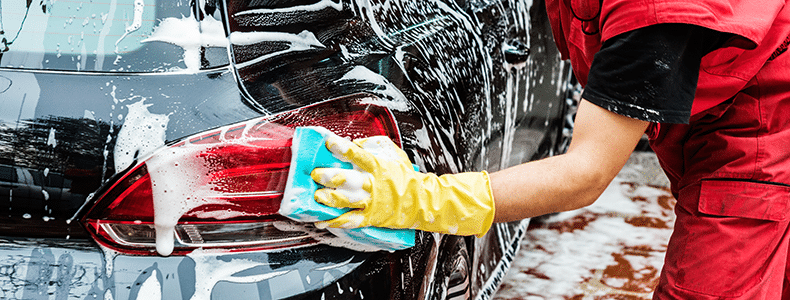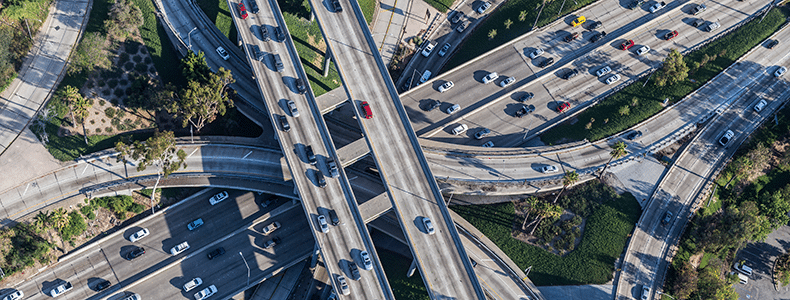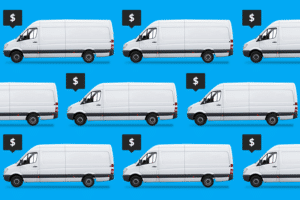Shipping a car can be stressful. It’s not always easy to trust strangers with transporting vehicles, and wrecks can happen. While most carriers have good driving records, wrecks can still pose risks to your vehicle. Choose the wrong company, and your car could get damaged by an at-fault trucker without ample insurance. So how does one find a reliable car shipping service?
With so much out of your control on busy highways, it’s worth taking the time to vet your carrier, along with their insurance qualifications and capabilities. This helps minimize road risks to your vehicle and forms a buffer if the worst happens.
Want to ship your car confidently and find a reliable car shipping service for a great experience? Keep reading to learn what mistakes to avoid when choosing a carrier.
NOT RESEARCHING CARRIERS
Choosing the right carrier takes careful research, so you’ll need to go beyond a car shipping service provider’s website to understand their reliability. Before hiring a carrier to transport your vehicle, do your homework across these areas:
Customer feedback: Explore customer review websites and forums for objective insights into a carrier’s performance. Look for consistent praise around safety, care, timeliness, and transparency. Patterns of complaints or low ratings are red flags. Real-world validation builds trust.
Industry standing: Choose carriers with longstanding industry experience instead of new entrants. Several years overseeing vehicle shipments correlate to polished expertise in managing documentation, licensing, specialized equipment, and diverse situations. Check the record of safety and compliance as well.
Business credentials: Verify that a carrier’s licenses, insurance certificates, and operating authorities are all legitimate and current. Standard cargo coverage should reach a minimum of $100k. Fleet maintenance logs also affirm safety commitment. Meanwhile, lacking credentials can increase risks during transportation.
Service capabilities: Align carrier offerings with your needs, whether standard open transport, enclosed shipping for collector vehicles, expedited cross-country transit, or even international relocations. Niche specialty carriers often excel over generalists.
IGNORING CAR SHIPPING SERVICE TYPES
When it comes to service offerings, not all auto transport carriers are created equal. To make the best decision for your transportation needs and budget, it’s essential to understand the different types of car shipping services. Without the right knowledge, you’ll risk paying for more protection than needed, or worse, leaving your prized SUV or vintage ride exposed to preventable damage.
Two key areas many customers overlook when researching carriers are carrier types and delivery methods. Will an enclosed trailer or open carrier suffice? What are the pros and cons of door-to-door versus terminal shipping for your situation? Let’s overview how these decisions impact costs, conveniences, and risks.
ENCLOSED VS. OPEN AUTO TRANSPORT
Enclosed trailers offer protected interior spaces for vehicles away from road debris and the elements, with additional handling care during loading. Enclosed transport is ideal for vintage, classic, and high-end cars. The downsides are much higher costs and limited availability.
Open auto carriers stack vehicles on uncovered trailers behind trucks. As a more affordable option, open transport works fine for daily drivers and hardy vehicles that don’t need pristine conditions. Just expect more exposure to the elements during transportation.
DOOR-TO-DOOR VS. TERMINAL SHIPPING
Door-to-door delivery involves picking up and dropping off your vehicle at your specified locations for added convenience at a premium. In other words, there’s no need to drive to depot lots.
Meanwhile, terminal-to-terminal requires driving vehicles to and from designated loading yards in each region to reduce costs. With that said, this option requires pickup/delivery convenience and typically takes more time to coordinate.
WHAT CARRIER INSURANCE TYPICALLY COVERS
Most standard cargo insurance policies held by carriers only provide basic liability coverage in incidents they directly cause, such as:
- Truck collisions
- Improperly secured vehicles falling off trailers
- Direct negligence, like keys getting lost or misplaced
CRITICAL COVERAGE GAPS TO WATCH OUT FOR
Several common mishaps during shipping often fall outside basic coverage:
- Third-party accidents: When another driver crashes into your parked transport truck, their insurance owes but may provide limited/slow payouts.
- Extreme weather: Hail storms, floods, and other extreme weather events exceed carrier policy force majeure clauses.
- Vandalism or theft: Carriers avoid liability for crime incidents absent gross negligence like an unlocked truck.
- Existing or inherent flaws: Undocumented prior damages or mechanical issues generally aren’t covered by carrier insurance.
- Vehicle condition discrepancies: It’s essential to confirm your vehicle’s condition before and after car shipping service to avoid any discrepancies.
WHEN TO PURCHASE ADDITIONAL PROTECTION
Additional protection becomes essential for vehicles with higher value, custom mods, classic status, or other vulnerabilities like age. Or just for someone who wants added peace of mind when shipping their vehicle. Common options include:
- Enhanced vehicle protection
- Door-to-door coverage
- Exotic/classic transport riders
The takeaway? Don’t assume carriers have you 100% covered. Read the fine print, understand gaps, and consider extra protection buffers, especially for prized vintage, exotic, or tailored vehicles. Remember: An ounce of prevention safeguards thousands in repairs and headaches.
DISREGARDING CAR SHIPPING SERVICE OPTIONS AND PRICING
You’ve finally committed to ship your beloved classic Chevy to its new home nationwide. After requesting a few vehicle transport quotes, you zero in on the carrier with the lowest bid. Case closed, right? Not so fast. Glossing over the details around confusing quotes and vague pricing is where many auto-shipping customers get burned.
When you ultimately fork over hundreds more than “estimated” or get blindsided by tacked-on fees, it leads to bitter buyer’s remorse. To avoid financial detours, prepare yourself to decipher quotes, compare apples to apples, and recognize price transparency red flags.
COMPARING CAR SHIPPING SERVICE QUOTES
Understand that not all quotes carry equal contractual weight in the transport world. Estimates provide rough price ranges, but final totals fluctuate. Binding quotes lock in guaranteed all-inclusive pricing, barring you requesting add-ons later.
Apples-to-apples comparisons require confirming if those $500, $700, and $900 options limit surprises later or leave wiggle room for unwelcome add-ons. Lock in binding rates!
SPOTTING HIDDEN FEES: ADMISSIONS PRICE VS. VIP
Scan for vague “admin fees” and “handling charges” that disguise added costs when looking for a car shipping service. Carriers tacking on back-end fuel surcharges, insurance upsells after the fact, and charges for going slightly off-route indicate shifty business. Ask for a complete written breakdown of all costs before pickup, including:
- Base transport charges
- Insurance/admin costs
- Any per mile/day variable charges
- Applicable taxes
Transparent flat-fee, all-inclusive quotes demonstrate good-faith providers who bid assuming realistic expenses.
WHY UPFRONT PRICING MATTERS
You shopped diligently for a reliable classic auto transport carrier rather than base selection purely on low-ball quotes. So, why does nailing down fair pricing still matter? Two reasons:
Financial: Shock charges erode great deals to meh ones. By selecting transparent quotes, you could end up saving hundreds.
Principle: Clear pricing signals an ethical transport partner who earns business through value, not tricks.
You can assess true transport affordability by mastering quote linguistics, comparing apples-to-apples, and scrutinizing fees. Now, you’re ready to make the best choice for your wallet and vehicle confidently!
NEGLECTING TO PREPARE YOUR VEHICLE FOR A CAR SHIPPING SERVICE

If you don’t take the proper precautions beforehand, you’ll open up risks of car issues en route or rejected insurance claims if damages emerge. To ensure your prized vehicle arrives safely at its destination, follow this pre-transport preparation checklist religiously:
Document the condition: Perform a bumper-to-bumper inspection, noting all existing paint flaws, interior wear, and mechanical issues with dated photos. Carriers may conduct their condition reports pre and post-shipment when liability questions arise.
Check fluids, tires, and batteries: Ensure the engine oil, transmission fluid, and wiper fluids are topped off. Swap old wiper blades. Inflate tires to recommended PSI and replace them if worn. Check battery life and ensure terminals are corrosion-free.
Disable alarms and tracking devices: Switch off alarm triggers to prevent battery drainage or annoying transport drivers struggling to deactivate sensors. Also, power down GPS tracking devices and log their status for reactivation later.
Remove valuables and sensitive documents: Remove all documents with personal information, electronics, jewelry, cash, and other irreplaceable items.
Carriers are not liable for stolen goods.
Check loose parts and accessories: Ensure no loose trim, antennas, or racks present safety issues or dislodge underway at highway speeds. Remove carriers/top cases on motorcycles. Check strapped loads on vehicles like jeeps or pickup trucks.
Disconnect toll devices and camera memory cards: Power down EZ-Pass sensors and remove SD cards from dash cams and sentry mode systems to avoid amassing usage fees or filling up storage.
Charge battery and add fuel stabilizer if needed: Ask carriers about keeping the key in the ignition during transport to maintain battery juice for extended transit. For stored classic cars, add a stabilizer to prevent gas deterioration issues.
Wash the exterior: Clean off thick dirt layers that can lead to paint scratching from road debris during shipment.
Photograph the vehicle after inspection: Take dated pictures capturing your vehicle’s pristine condition before handoff from multiple angles. Time-stamped photos ensure no squabbles in assessing condition changes upon delivery.
FAILING TO UNDERSTAND THE DELIVERY TIMELINE
You marked the calendar when your new car gets transported from the dealership to arrive just in time for a special event. A week before the big day, with no vehicle in sight, you call the carrier in a panic. The sales agents should’ve provided realistic delivery time expectations accounting for factors influencing shipping duration.
When relocating vehicles, customers must pay more attention to variables that make pinpointing time-of-arrival slippery beyond simple route mileage. Assess transport timelines accounting for:
- Transport type: Enclosed trailers ship fewer vehicles, impacting routing efficiency over open carriers moving 10+ vehicles between hubs.
- Route complexity: Cross-country journeys typically involve multiple pickup/drop-offs versus short in-state moves.
- Seasonality: Winter road hazards like ice, snow, or summer doldrums around holidays delay transit industry-wide.
- Vehicle type: Special loading precautions for boats, R.V.s, and large trucks involve ample time, which may affect the delivery timeline
Ask for detailed pickup and delivery experiences for your exact transport scenario. For realistic results, pad any estimates by 7-10 days for contingencies. Avoid heartache by managing expectations around events or deadlines and planning buffer windows into vehicle arrival.
CHOOSING A CARRIER BASED SOLELY ON PRICE
You finally bought your dream car: a classic Ford Mustang worth over $75,000. Now, you need to from the seller a few states away. Money is tight, so you look for the cheapest transport quote. But choosing only based on low price is risky with such a valuable vehicle. The cheapest carriers may cut corners that could damage your Mustang.
CUT-RATE CARRIERS CUT CRITICAL CORNERS
Ultra-budget carriers survive on razor-thin margins by skimping precisely where it matters most —proper protections that minimize shipment risks for customers.
Inadequate insurance: State minimum liability levels may only cover $10,000-$20,000, leaving owners to pay repair bills when actual damages occur in transit. Pay extra to ensure assets stay shielded with carriers boasting $250k+ dedicated auto/exotic policies.
Inexperienced Contractors: Hiring outside non-employee owner-operators at cut wages rather than maintaining trained internal fleet teamsters intimately familiar with securing specialty vehicles introduces human error liabilities. Again, you get what you pay for regarding expertise!
QUALITY PROVIDES BOTH TANGIBLE AND INTANGIBLE VALUE
Higher cost carriers justify premium pricing through specialized experience and equipment investments that better protect vehicles from harm, including:
Enclosed Auto Transport: Temperature and environment-controlled trailers with hydraulic lift gates shield vehicles from weather and debris threats that commonly lead to damages. Enclosed shipping costs thousands more, but for six-figure vehicle resale value preservation, it offers tangible safeguarding peace of mind.
CHOOSE USHIP FOR STRESS-FREE CAR SHIPPING
When selecting a carrier to entrust with your valued vehicle, avoiding common pitfalls is crucial for a smooth, hassle-free shipping experience. uShip makes it easy to look for and find carrier with outstanding online reviews and reputation.
Taking time to thoroughly vet the carrier’s reputation, capabilities, and protections ensures your prized possession stays secured across every mile. Plus, it gives you the peace of mind you deserve while handing over your car keys to a car shipping service provider.
Ready to ship worry-free? Millions of customers trust uShip’s transparent quote marketplace to connect with the industry’s top-rated carriers, perfect for everything from daily drivers to rare vintage vehicles. Get customized transport bids tailored to your exact shipping needs.

FREQUENTLY ASKED QUESTIONS (FAQS)
What should I look for when choosing a car shipping service?
Choose a carrier with extensive positive customer reviews, proper DOT registrations and licenses, adequate insurance coverage (at least $100k), transparent pricing with no hidden fees, and experience explicitly shipping vehicles identical to yours. Their reviews, credentials, pricing, and capabilities should all align.
How much does it cost to ship a car?
Most open auto transport carriers charge between a few hundred to a few thousand dollars, depending on the miles, type of vehicle, and service.
Is it safer to use enclosed auto transport?
Enclosed auto transport is generally safer because it protects vehicles from road debris, extreme weather events like hail or rain, and physical damage from contact with other vehicles during loading and unloading. However, it costs about 2-3x more than open carriers. To make the best decision for your vehicle, weigh the added cost against elevated safety.
How do I prepare my car for shipping?
Review the vehicle inspection checklist from your transport provider, including turning off any car alarms, removing personal items and valuables, checking fluids, and noting any existing exterior damage beforehand with dated photos. This provides proof of your car’s condition, allowing you to resolve disputes regarding when or how the damage occurred during shipment.
Can I ship personal items in my car?
Auto transport companies typically allow you to ship small personal items, boxes, or suitcases inside your vehicle during transit. However, you should request specifics on quantity and weight limits based on the trailer space available. In addition, confirm the removal of all valuables and electronics, as carriers carry no liability for these if they’re lost or damaged.



